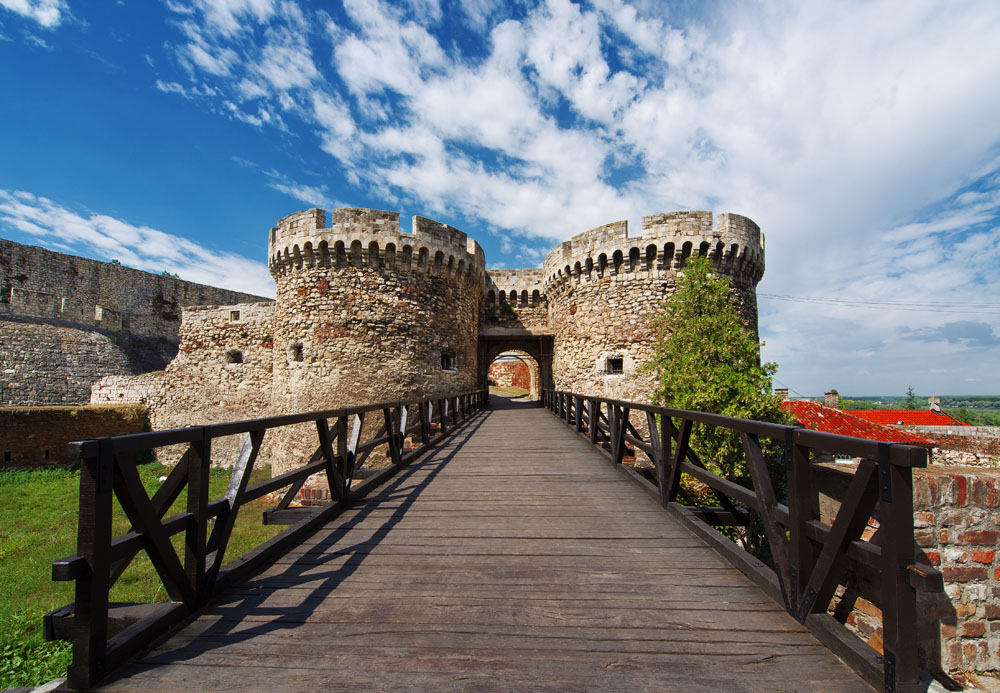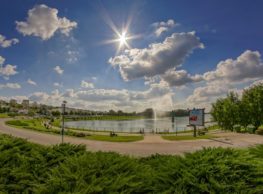BELGRADE FORTRESS
Date: 25-05-2017
Belgrade fortress was bulit on a ridge overlooking the confluence of the Sava and Danube in the period from I to XVIII century as a defensive structure. The fortress is now a museum of the history of Belgrade. This unit consist of the Belgrade fortress itself, divided into Upper and Lower Town, and the Kalemegdan park.
Because of the strategic importance of this place a fortress was bulit here at the end of the first century AD – Roman castrum, as a permanent military camp of the IV Flavius’s legion. After its destruction by the Goths and Huns, it was reconstructed in the early decades of the 6th century. Less than a century later, it was destroyed by the Avars and Slavs. With a stronghold on the hill above the confluence of the Sava and Danube, there is the ancient Singidunum, and at the same place the Slovenian Belgrade. For centuries, the medieval town developed in the Fortress area, searching for safety within its walls. Belgrade Fortress has been destroyed many times, and rebulit. Above the Roman walls stand Serbian rampats, and through them, Turkish and Austrian fortifications. In the 12th century Byzantine Emperor Manuel Comnenus erected new castle on Roman ruins. In the first decades of the 14th century, this small stronghold on the hill was expanded to the river banks. Under the rule of Despot Stefan Lazarević, as the new center of Serbia, Belgrade has been fortified with wide forts of Upper and Lower Town. Despot’s palace was bulit at the old castle, and war port was expanded on Sava river. Within the walls developed a thriving medieval city. After the Ottoman conquest in 1521, until the end of the 17th century, Belgrade Fortress has not expanded significaly. A new era began with the Austro-Turkish war. As a key fort in the middle of the war during the 18th century, the Fortress was rebulit three times. The old castle was razed, and a large part of the medieval walls was covered by new fortifications. Under Austrian occupation, 1717-39. after the construction of new modern fortifications, the Belgrade Fortress was one of the strongest military fortifications in Europe. It was bulit according to the desings of General Nicholas Doksat Demorez, Swiss in Austrian service.
A twist of fate, in a March morning in 1738, due to the defeat at Nish, just below the walls of the Fortress her builder was shot. Turks return to Belgrade in 1740. preceded the demolition of all the new-bulit fortifications. By the end of the 18th century the Belgrade Fortress got its final shape. The war destruction in recent decades demolished almost all structures in Upper and Lower Town, and badly damaged Fortress walls. You can reach Belgrade Fortress from the streets of Knez Mihailova and Uzun Mirkova. In this direction are the main Fortress gates – Stambol Gate (inner and outer) and Sahat Gate. In medieval fort was entered from the East side (near today’s Zoo), through Zindan-gate and Despot’s gate of Lower Town. To Lower Town you can approach from Vojvode Bojovic’s Boulevard (Vidin Gate) and from Karađorđeva Street (Dark Gate). When you are done with sightening of Belgrade Fortress we recommend for you some of our apartments, like apartment Superior, in the very heart of the city





